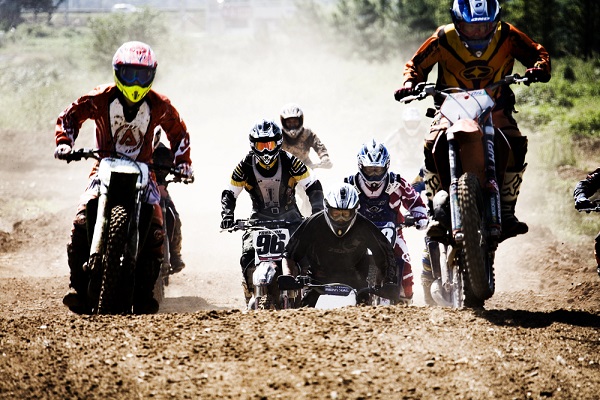3 Common Myths About Coverage for Dirt Bikes

By: AnneMarie McPherson Spears
The global dirt bike market was valued at $4 billion in 2022 and is estimated to grow to $9.5 billion by 2032, an 8% compound annual growth rate, according to Global Market Insights. The growth, encouraged by the pandemic-era emphasis on outdoor recreation and leisure activities and rise in outdoor recreational facilities, is also being propelled by technological advances in dirt bikes and the adoption of electric dirt bikes.
“Over the last few years, we have seen an increase in the number of dirt bike (off-road motorbike) policies we have issued,” says David Knapp, director of specialty product management at Foremost, a Farmers Insurance company. “While all-terrain vehicles still dominate the off-road market, it appears consumers are realizing that off-road motorbikes are an affordable recreational option.”
“In terms of the dirt bike market, growth really took off during the pandemic,” agrees Steve Gartman, motorcycle product manager, Progressive Insurance. “I didn’t hear any inventory issues that were specific to dirt bikes, but it’s likely there were some supply constraints given the issues supply chains faced during that time frame. As far as we can tell, those are resolved.”
With the increasing popularity, “customers now have more options to insure optional equipment, helmets [and other] safety apparel, transport trailers and personal property,” Knapp says. “Some carriers also have policy packages that have unique coverage features like diminishing deductibles or deductible waivers built in.”
As the dirt bike market develops, there has been a shift “away from true off-road dirt bikes and toward dual sport bikes, which are essentially dirt bikes that are designed to be ridden either on-road or off-road,” Gartman says. “This shift has big coverage implications since legally insurance is typically not required for dirt bikes that are off-road only—but it definitely is required for bikes that are ridden on-road.”
While coverage isn’t a legal requirement for off-road dirt bikes, that doesn’t mean consumers don’t need it. “Not having insurance at all brings the risk of personal liability for injuries and property damage,” Knapp says.
Here are three myths about dirt bike insurance that independent insurance agents can educate clients on:
1) “My dirt bike is covered under my homeowners policy.” “Homeowners policies typically exclude coverage on any motor vehicles,” Gartman says. “Even if there is coverage, it will likely be limited and only extend to claims that occur on your property. Standalone dirt bike policies ensure you have exactly the coverage you need.”
“In addition, by having standalone dirt bike insurance, claims will typically not affect your homeowners [insurance] rates,” he adds—a fact that will likely be very important to clients, given the affordability and accessibility crisis plaguing the homeowners insurance market.
2) “If my dirt bike isn’t worth much, I don’t need insurance.” “Aside from helping to protect your bike, dirt bike insurance can be extremely helpful in paying for your medical expenses if you have an accident, or in protecting you from liability if you cause damage or injure someone with your dirt bike,” Gartman says.
3) “I don’t need insurance because I have a ton of riding experience.” “While new riders are more likely to have an accident, we see claims regularly from riders of all experience levels,” Gartman says.
While accidents are a reality at all stages of ownership, “dirt bike riders are most likely to have an accident in their first year owning a bike regardless of their level of experience,” he adds. “Even experienced dirt bike riders are more than twice as likely to have an accident in their first year with a bike that is new to them than for bikes that they have been riding for a long time—which is why it’s important to have the right coverage.”
Safety First
Of course, the best insurance claim is the one that doesn’t happen in the first place. Here are some safety tips that agents should warn their clients about to reduce the risk of incidents:
1) Safety equipment. “Wearing a helmet and safety apparel is always a good idea and can help prevent severe injuries and liability risk,” Knapp says. Safety equipment includes a Department of Transportation (DOT)-compliant helmet, goggles, long sleeves, long pants, over-the-ankle boots and gloves, according to the Motorcycle Safety Foundation (MSF).
2) Maintenance. Off-road motorbike owners should always keep their bikes maintained, as wear and tear can lead to unexpected events, Knapp warns.
3) Supervision. “Many of these types of vehicles are driven by guests or youthful operators,” Knapp says. “Additional care, instruction and coverage may be warranted.” For all levels of experience, the MSF instructs dirt bike riders to use a buddy system and never ride alone on remote trails.
AnneMarie McPherson Spears is IA news editor.










